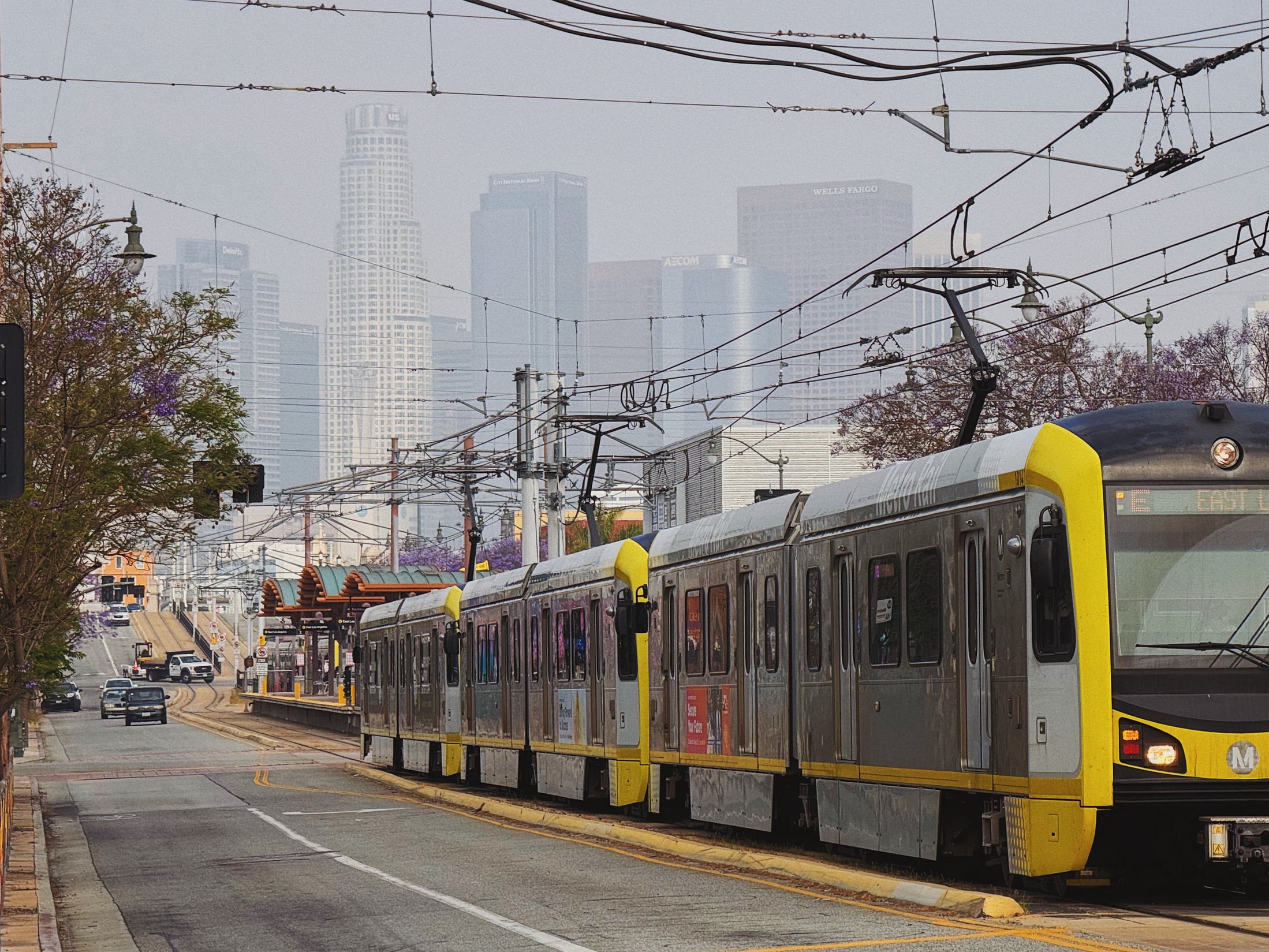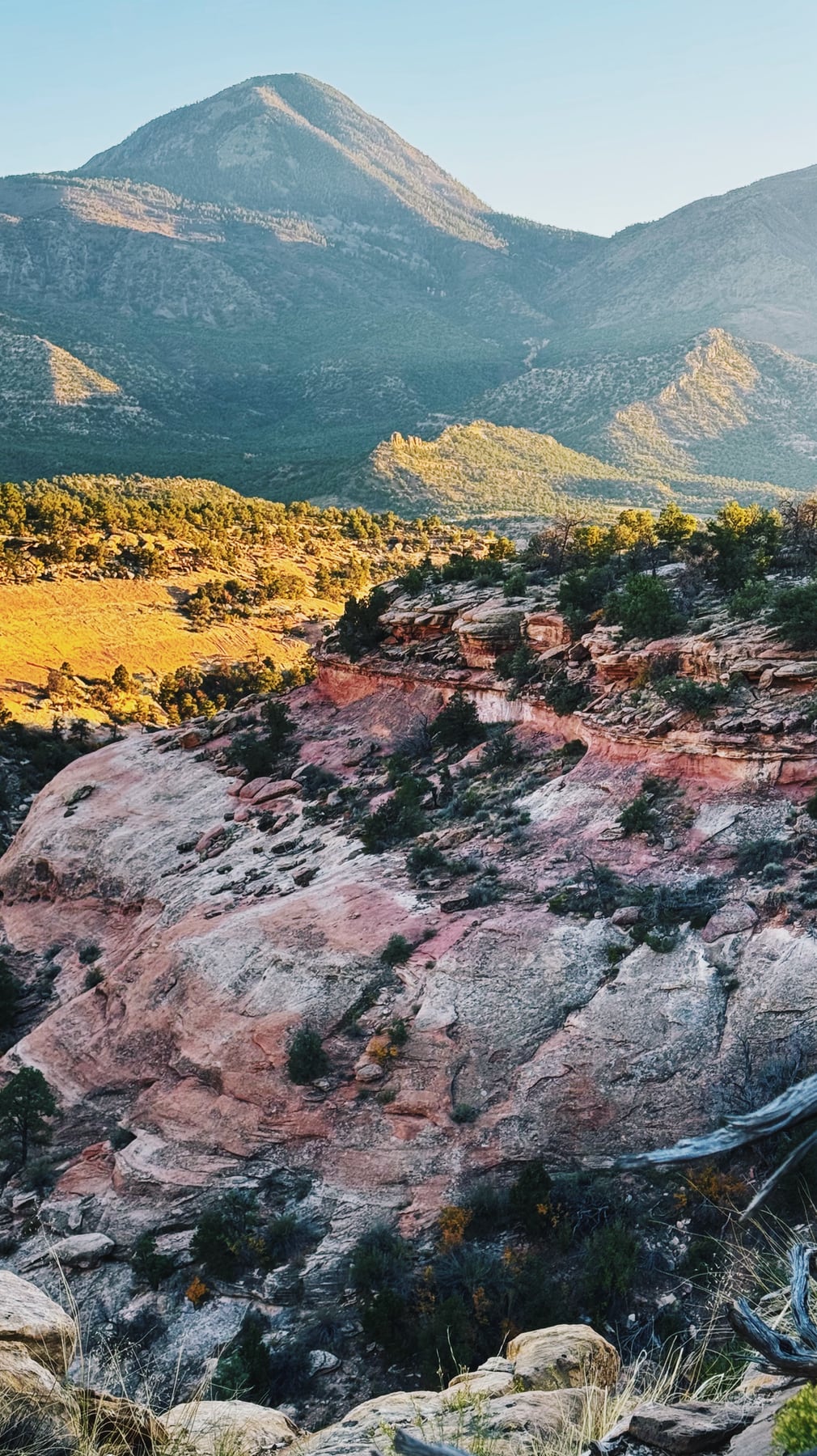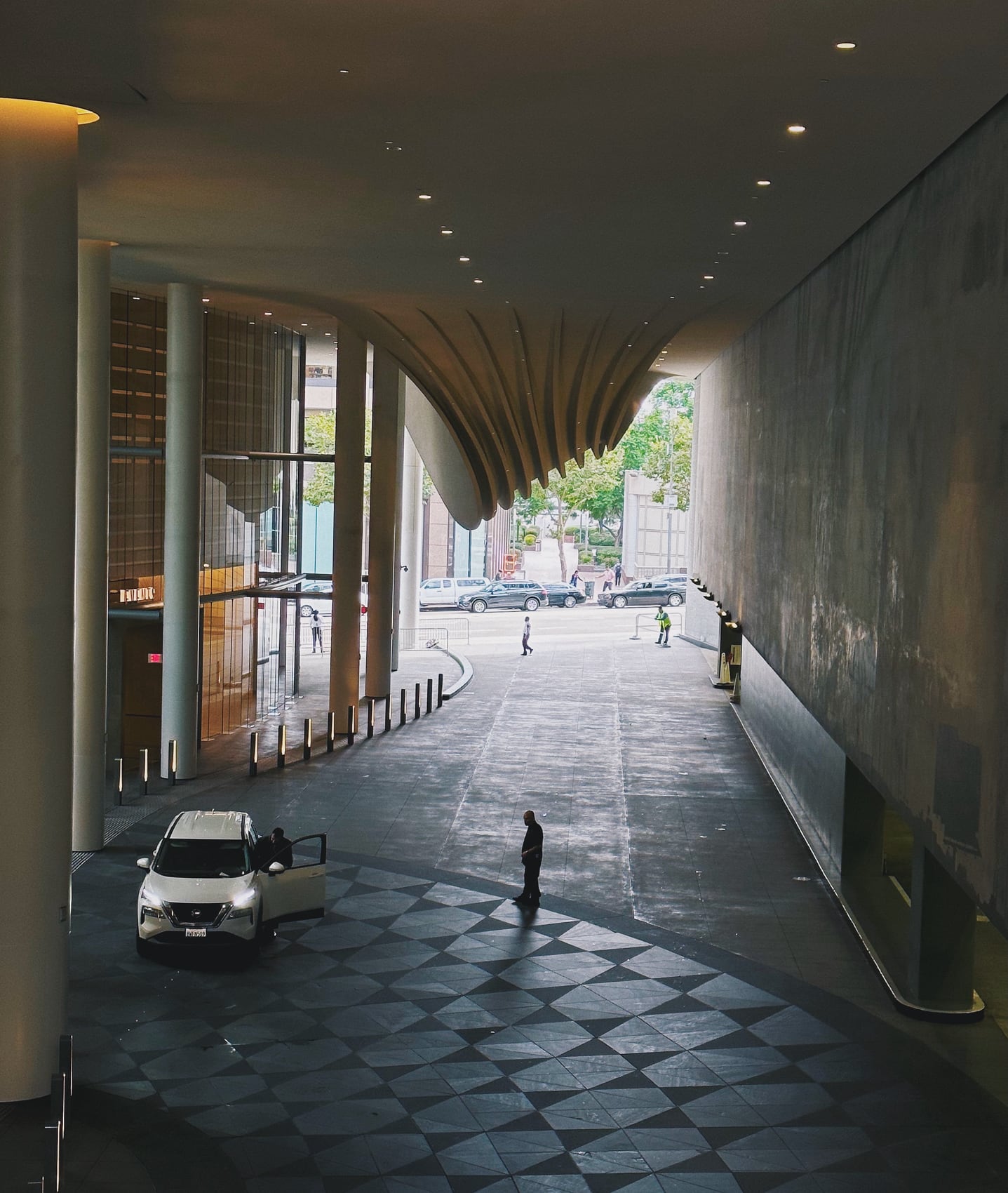
I took the E-line train west out of downtown LA today. I love that this train exists and yet it’s also such an exercise in frustration. It’s relatively early on a Saturday morning. The train is full. And yet, we spent about 5 minutes waiting at stop lights for the convenience of quite a small number of drivers, usually solo in their personal vehicles, passing through the mostly empty streets of sleepy LA. It is madness. We have the technology to solve this (other cities with similar on-street light rail stretches have done so), yet the City of Los Angeles refuses to do much of anything that could potentially inconvenience a few private vehicle drivers at the expense of a full train of public transit riders.
We create class systems in many of the ways in which we design our society, but, at least in America, we don’t like to acknowledge them for what they are: choices to privilege some over others. We could make public transit the best choice for the most number of people moving about a city, but we’ve decided it’s a service for the less fortunate—for the people who can’t drive (or can’t afford to).
We build these class distinctions outside of cities too.
I am fortunate enough to spend a good chunk of my time outside of Los Angeles, in a beautiful, rural red rock canyon tucked down in the Southwest corner of Colorado. It is a place that few people know about, near a town that even few Coloradans have heard of. And that town and the broader county are, by all American standards and measurements, relatively low-income and disadvantaged. A few of us thrive there because we’ve built wealth elsewhere while many more struggle to get by.
When I am there, I am able to do my very online job thanks to the immense privilege of having access to not only one, but two excellent internet connections. This is not the case for most of that county.
It is an immense privilege that I have a job that allows me to afford excellent internet connectivity, now generally unlimited by where I chose to live. And, in a paradox of circular dependency, that job requires high-quality internet for me to accomplish it.
I have my qualms with Elon Musk, but Starlink is, quite simply, amazing. Other satellite-based internet connections that I have experienced are expensive, have prohibitively-large data caps, onerous contracts, can’t handle weather, and work about as well as the dial-up modem I used as a teenager in the 90s. The only quality Starlink shares with these legacy services is the cost. It is truly disruptive. I cautiously signed up for the beta a few years ago and used it as a backup internet service in case the local provider went down. As Starlink has launched more satellites and improved the service, it is now my primary provider. Its most important quality? I rarely think about it. It works and in day-to-day use is imperceptible from my wired connection in the city. It is incredible to me that the main limiting factor to how I make my living is no longer tied to geography or even the available local infrastructure.
But if you are in the county’s average income tier, it will be hard for you to outlay the initial cost for the equipment and pay the ongoing fee for the service.
Before Starlink, a local provider started out as my primary connection in the canyon. It is a relatively new company (it didn’t exist a few years ago when I started visiting the area) and the person who runs it is knowledgeable, responsive, and has responsibly expanded the network’s coverage area as he has grown the business. The bulk of the network is point-to-point wireless, which means once your neighbor up-canyon has a signal tower, the provider can relay (extend) the signal to your property without the expensive infrastructure investment of laying wires. The high-dependency nature of its construction is slightly more fickle than Starlink, but ultimately it is still an excellent and (mostly) reliable service. At the time I got access to it, I was so grateful. My only other choices were the aforementioned legacy satellite service, and the Big Telecomm™ DSL service that was, for all intents and purposes in our modern society, dial-up (it would not actually qualify as “broadband” under the old 25/3 definition from 2015, let alone the updated definition).
This local provider is still not cheap (for broadband speeds), but it is more reasonably-priced than Starlink and requires no up-front equipment expense. The big limiters to the service are density (how many people will be served as the network is built out) and physical topography (if I can’t get line-of-sight to any of my neighbors, I can’t get service, full-stop). In a rural area with undulating hills, mountains, and canyons, this is a true limitation. I don’t know the coverage map of the local provider, but I would suspect the economics of the service buildout would map coverage fairly neatly alongside the more wealthy and dense areas of the county.

Public transit, broadband—these are two ways I see class imperceptibly showing itself in my American experience. It’s easy not to notice if you’re not affected, but it’s there and it’s unforgiving.
It is an immense privilege that I have a job that allows me to afford excellent internet connectivity, now generally unlimited by where I chose to live. And, in a paradox of circular dependency, that job requires high-quality internet for me to accomplish it. Yes, some government subsidies exist, but they’re not always easy to get, and the programs are often not well-run. Starlink itself was part of such an FCC program and no longer qualifies for it, to the detriment of the lower-income customers it was serving. And the program itself is no longer accepting applicants.
The internet is a utility that society treats as optional entertainment. When you have access to it, and when you can easily afford it, it is taken for granted. It does not feel optional, but it also does not feel like an economic burden.
From a recent FCC Press Release announcing their update to the broadband standard:
Fixed terrestrial broadband service (excluding satellite) has not been physically deployed to approximately 24 million Americans, including almost 28% of Americans in rural areas, and more than 23% of people living on Tribal lands
Mobile 5G-NR coverage has not been physically deployed at minimum speeds of 35/3 Mbps to roughly 9% of all Americans, to almost 36% of Americans in rural areas, and to more than 20% of people living on Tribal lands
If you drive your private automobile from your private garage, point-to-point throughout the city of Los Angeles, throwing keys at city-mandated valet parking attendants each stop along your way, I would almost forgive you for not realizing that you are being specifically catered to.

We have made some progress in rural areas. One local example: there is a local school in my canyon and a number of years ago, government assistance helped connect it to the internet with fiber—an expensive endeavor. But to my knowledge, no homes—not even those on tribal lands of the adjacent Ute Mountain Ute Reservation, have been able to tap into that connection. The Big Telecomm™ provider in the area, which presumably could lay those connecting wires, still only offers its paltry DSL connection. I’m sure it has run the numbers and decided serving less-wealthy customers in a low-density area won’t pay out. We still have a lot to do.
If you drive your private automobile from your private garage, point-to-point throughout the city of Los Angeles, throwing keys at city-mandated valet parking attendants each stop along your way, I would almost forgive you for not realizing that you are being specifically catered to. Priority traffic signaling at the expense of public transit, free or quick attended parking, and homes with automobile storage feel normal. You might not even think about all of the little micro-decisions in society that created the system you move within and understand that many people in the city don’t have access to it.
If you move into a new home and can immediately sign up for a $100+/month internet service delivering fast, reliable speeds, you probably wouldn’t even think about how the zip code you chose to live in (and can afford) is part of what gives you that access.
I want to acknowledge that in a country as physically vast as the United States, infrastructure is expensive. But with services like Starlink or local line-of-sight wireless, we can no longer use that excuse as to why rural economies tend to face the burden of fending for themselves when it comes to basic services.
I do the work I do for a living in no small part because I had access to an internet connection as a teenager. That connection helped shape me and open up my world. What art, creativity, skill, and sure, economic potential, is going untapped right now in Rural America because a child does not have access to a solid connection to the wider world?
This piece was originally a /now update on a previous iteration of this site. It appears here with some minor edits.